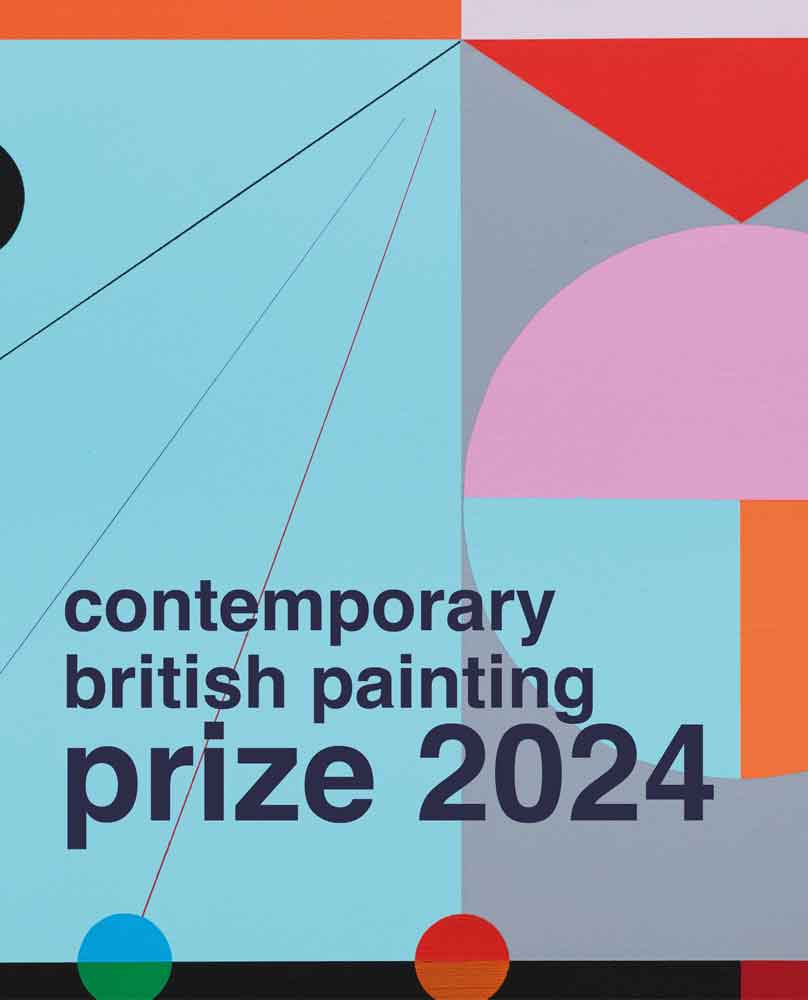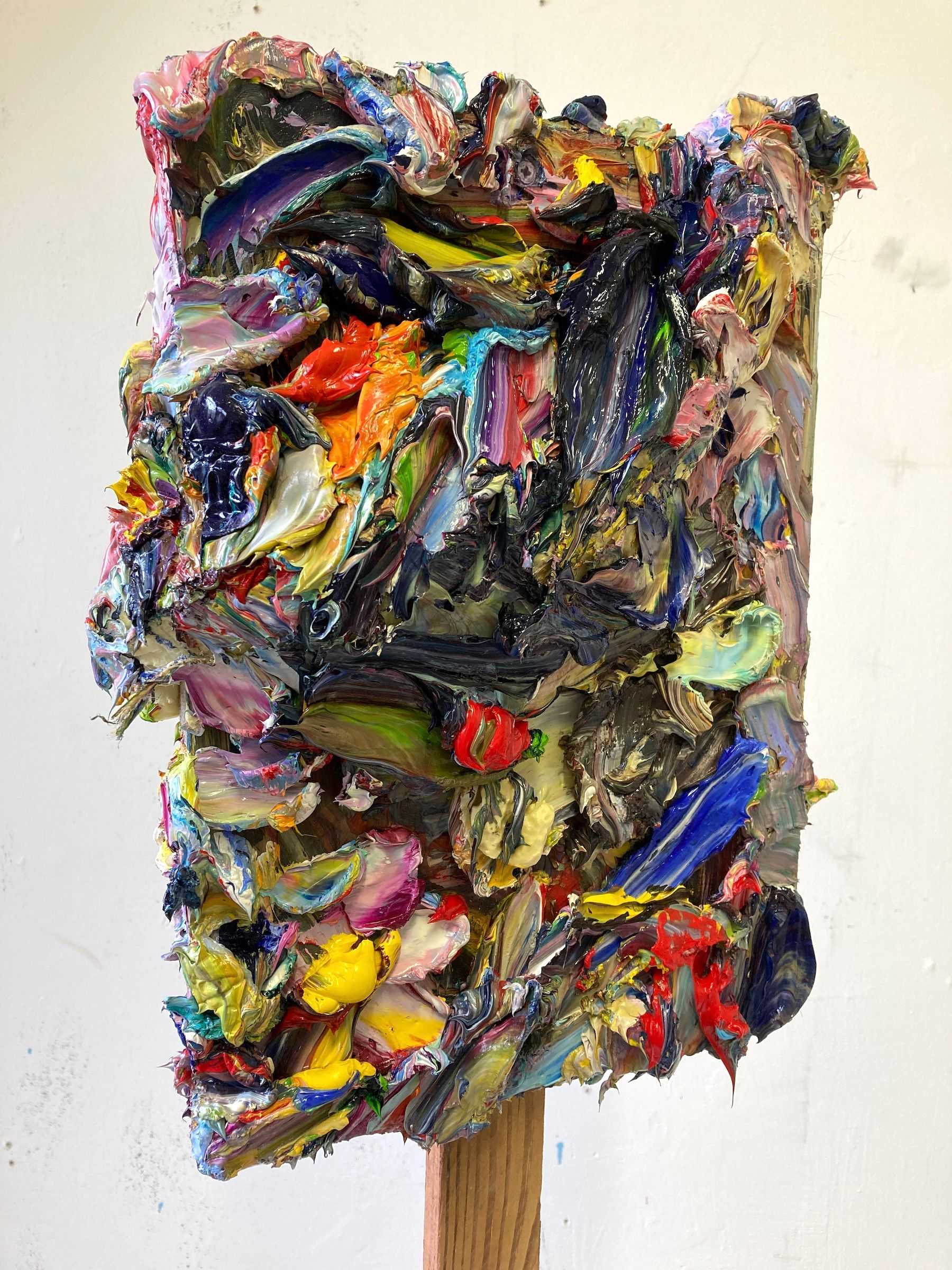Plausible Objects / Difficult Things
Tim Dodds
Your prompts with regard to model making are useful as I realize it has changed over the last few years, despite the fact I’ve kept a lot of the models I started making eight years ago. They crumble, collapse, get trodden on but mostly seem worth keeping. I’m combining old models with clay, plaster, foam and using large geometric forms to make up to human size, totemic masses.
Ideas for new models can come whilst painting – I’m surrounded by mounds of old models and have to shift them to make space. The haphazard combination of things has become interesting. Now, the experimentation in model making is about playing with how to combine things which wouldn’t normally stick together such as a mass of oil paint, cardboard models, clay and plaster. Expanding foam works well for its lightness and adhesive properties. Using the foam and clingfilm/foil, I’ve been making long sausages that I wrap around models which can then look like viscera or tentacles. I spray the foam over the models to stabilise them and hold them together. When dry, the foam has an oozing, lava, ectoplasmic quality that reminds me of stalactites and stalagmites. I’ve also been using spray paint to disrupt the surface colour and relief as it melts the foam as it dries. I’ve been incorporating oil paint scraped off the palette at the end of painting sessions and abandoned paintings into my models – I like that these things can find new purpose. As the models have grown so big, I’ve also been breaking them apart to make smaller things. It might be sensible at some point to throw everything out and start again from scratch, but it’s currently productive to work in media res where the language and symbolism of forms is constantly collapsing and transforming.
Recent paintings of these things are initially painstakingly drawn out from direct observation. They are then painted, often rapidly, so that the image appears on the verge of abstraction yet there remains a residual sensation of its weight and objecthood. The things depicted appear improbable, sometimes off balance, top heavy, unpleasant, decaying, but are also made animate by the passage of light across them. In some ways they’re anti-subjects which diffuse my own somewhat cynical, melodramatic feelings of despair with how things are now but coloured with a tentative optimism of something new emerging. A ‘thing’ can have sci-fi/horror connotations – alien, incomprehensible, monstrous, for example. Someone said that the subjects in my paintings were like things found in H.P. Lovecraft horror fiction. This stuck in my head and has probably had some influence on the kind of things I’ve made and painted subsequently.
The models perhaps become significant things when they present a challenge, inviting a story which can only be told through drawing and painting. The thing is defined by the space around it, the negative shapes it forms with surroundings, its temporal appearance, its light and shadows. I’m stubborn about working from direct observation. For me, the presence of the real encounter can’t be substituted by a photograph. There’s a sense of satisfaction when a painting is finished, in that it articulates that encounter in some way. In this sense, the capturing of the thing in the finished painting could be seen as a return to object.
There’s mysticism in ‘things’ – presence, undefined meaning. It’s to do with frame of mind, especially when painting. Painting itself can shift between difficult analytical concentration to feeling like a more intuitive revealing process. Model making is relaxing, it can simply be about playing with materials such as clay and foam but in opening up possibilities for painting, models become strangely symbolic as unexpected relationships occur. In the model I’m currently painting, I spray-painted expanding foam and as it was curing it dribbled, the foam melting and expanding at the same time, appearing slightly horrifying but full of implication – perfect for painting. In a sense, the paintings of these unnameable things don’t transform into ‘something beyond’, but assert themselves obstinately as the subject matter. There’s a primordial, immersive attraction in painting these things. At the moment, my way of working with materials feels very self-contained. Things are evolving and expanding through the circular process.
© Tim Dodds and Frances Woodley
Image 1. Tim Dodds, The 5th, 2020, oil on canvas, 163×84cm. Photo the artist. © the artist.
Image 2. Tim Dodds, Royals, 2020, oil on canvas, 237×169cm. Photo the artist. © the artist.
Image 3.Tim Dodds, Painted model (detail), 2020, mixed media including stretched canvas, oil paint, timber, clay, 88cm high. Photo the artist. © the artist.





